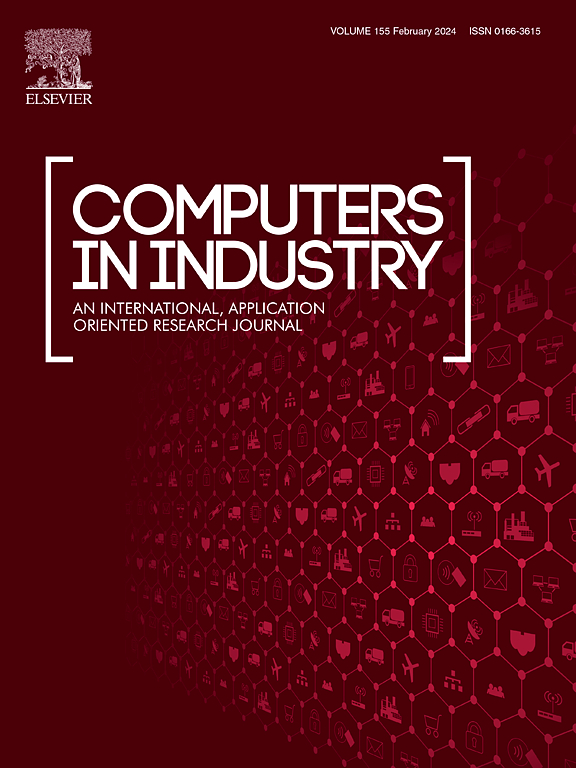Fault diagnosis technology of aero-engine rotors based on meta-action theory driven by machine learning for reliability improvement
IF 9.1
1区 计算机科学
Q1 COMPUTER SCIENCE, INTERDISCIPLINARY APPLICATIONS
引用次数: 0
Abstract
The intricate structure of electromechanical products presents significant challenges in fault diagnosis, and conventional methods frequently fail to capture the correlation between time-domain and frequency-domain features of fault vibration signals. Moreover, these methods typically rely on extensive training datasets and demonstrate limited generalization capabilities. To overcome these limitations, this paper introduces a fault analysis framework based on the meta-action unit (MAU) to streamline fault diagnosis processes in electromechanical products. An integrated model comprising Fast Fourier Transform (FFT), Convolutional Neural Network (CNN), Bidirectional Gated Recurrent Unit (Bi-GRU), Transformer and Attention mechanisms, which designated as the FFT-CNN-Bi-GRU-Transformer-Attention model, was developed to enhance the extraction and representation of vibration signal features, thereby improving model robustness and accuracy. The methodology involves several sequential processes. Initially, fault signals were collected using the MAU and transformed from the time-domain to frequency-domain via FFT. Subsequently, a CNN was employed to automatically extract salient features from the frequency-domain signals. Bi-GRU was then applied to process these features in both forward and backward directions, thus enriching the expressiveness of the data representation. To facilitate efficient parallel computation, the Transformer mechanism was incorporated to refine the output from the Bi-GRU, while the Attention mechanism was used to capture intricate fault features and patterns, significantly enhancing the model’s diagnostic performance. The proposed method was validated using an aero-engine rotor unit as a test case, achieving an accuracy of 98.16 %. Comparative analyses with conventional fault diagnosis techniques underscore the clear advantages of the proposed method. This method provides a foundation for accurate fault identification and timely maintenance of aero-engine rotors, as well as other electromechanical products with analogous structural characteristics.
基于机器学习驱动元作用理论的航空发动机转子故障诊断技术
机电产品复杂的结构给故障诊断带来了很大的挑战,传统的方法往往无法捕捉故障振动信号的时域和频域特征之间的相关性。此外,这些方法通常依赖于广泛的训练数据集,并且泛化能力有限。为了克服这些局限性,本文引入了一种基于元动作单元(MAU)的故障分析框架,以简化机电产品的故障诊断过程。基于快速傅里叶变换(FFT)、卷积神经网络(CNN)、双向门控循环单元(Bi-GRU)、变压器和注意力机制,建立了FFT-CNN-Bi-GRU-变压器-注意力模型,增强了对振动信号特征的提取和表征,从而提高了模型的鲁棒性和准确性。该方法涉及几个连续的过程。首先利用MAU采集故障信号,通过FFT将故障信号从时域变换到频域。随后,利用CNN从频域信号中自动提取显著特征。然后应用Bi-GRU对这些特征进行正向和反向处理,从而丰富了数据表示的表达性。为了提高并行计算的效率,引入了Transformer机制来细化Bi-GRU的输出,而使用了Attention机制来捕获复杂的故障特征和模式,显著提高了模型的诊断性能。以某航空发动机转子单元为例,对该方法进行了验证,准确率达到98.16 %。与传统故障诊断技术的对比分析表明,该方法具有明显的优越性。该方法为航空发动机转子及其他具有类似结构特征的机电产品的准确故障识别和及时维修提供了基础。
本文章由计算机程序翻译,如有差异,请以英文原文为准。
求助全文
约1分钟内获得全文
求助全文
来源期刊

Computers in Industry
工程技术-计算机:跨学科应用
CiteScore
18.90
自引率
8.00%
发文量
152
审稿时长
22 days
期刊介绍:
The objective of Computers in Industry is to present original, high-quality, application-oriented research papers that:
• Illuminate emerging trends and possibilities in the utilization of Information and Communication Technology in industry;
• Establish connections or integrations across various technology domains within the expansive realm of computer applications for industry;
• Foster connections or integrations across diverse application areas of ICT in industry.
 求助内容:
求助内容: 应助结果提醒方式:
应助结果提醒方式:


